Table of Contents
Composite fencing has emerged as a popular alternative to traditional wood fences, offering durability and aesthetic appeal.
This article explores what composite fencing is, its numerous benefits, and how it compares to conventional wood options.
It also addresses common questions, such as whether you can paint composite fencing, the best types of paints to use, maintenance tips, and how to repair any damage.
By the end, you will have the knowledge needed to make informed decisions about your fencing options.

What Is Composite Fencing?
Composite fencing is an innovative outdoor fencing solution that combines the durability of wood and plastic to create a strong, visually appealing barrier for your outdoor space.
Made from composite boards, these fence panels are designed to withstand the test of time while providing a modern look that enhances your property’s aesthetic.
Unlike traditional wood fencing, composite fencing eliminates many problems associated with wood, such as UV damage, fading, and structural integrity issues, making it a preferred choice for homeowners seeking a maintenance alternative that stands up to the elements.
Take a look: Is Bamboo Fencing Durable
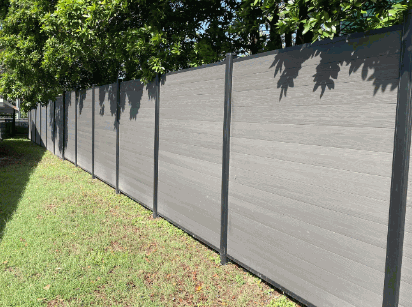
What Are The Benefits Of Composite Fencing?
The benefits of composite fencing are numerous, making it a popular choice for homeowners and businesses alike. One of the most significant advantages is its resistance to UV damage and fading, ensuring that your fence will maintain its luxurious finish for longer periods, unlike traditional wooden fences that require constant maintenance and natural wood oils.
Additionally, composite fencing offers a strong warranty against structural damage, providing peace of mind and long-term value for your investment.

How Is Composite Fencing Different From Traditional Wood Fencing?
Composite fencing stands apart from traditional wooden fencing in several key ways, primarily due to its unique composition and resilience to common issues faced by wood. While traditional wooden fencing can suffer from extractive bleeding, fading, and structural damage due to weather elements, composite fencing is engineered to withstand these challenges, offering a maintenance alternative that significantly reduces the time and effort needed to keep the fence looking new.
Moreover, composite materials resist scratching marks and watermarks that often plague wooden fences, making them a superior choice for homeowners seeking durability and aesthetics.
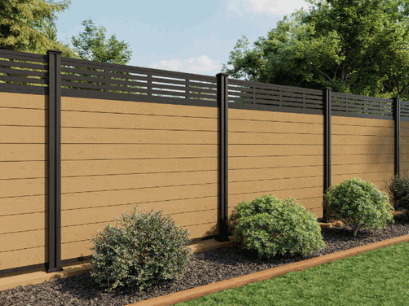
Can You Paint Composite Fencing?
Yes, you can paint composite fencing, and it’s a great way to refresh its appearance or customise its colour to fit your outdoor aesthetic. However, it’s essential to choose the right type of paint, such as high-quality acrylic latex paint, specifically formulated for use on composite materials.
This ensures that the paint adheres well and withstands various weather elements without compromising the structural integrity of the composite boards.
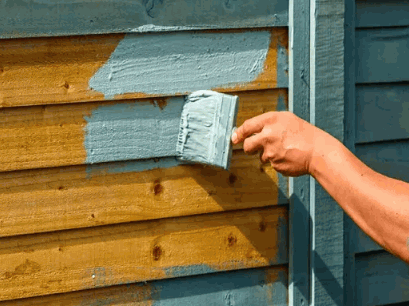
What Are The Steps To Painting Composite Fencing?
The steps to painting composite fencing involve several key actions to ensure a long-lasting and aesthetically pleasing finish. First, thoroughly clean the composite boards to remove any dirt, mud, or debris using a mild detergent or specialised cleaner to ensure proper adhesion. After the cleaning process, allow the surface to dry completely before applying an outdoor acrylic-based primer, which prepares the surface for the topcoat of paint to be applied with a paint sprayer for a smooth, even finish. Maintaining a consistent technique throughout the process is crucial for achieving optimal results.
Once the primer is dry, follow these steps to complete the painting process:
- Choose the Right Paint: Select a high-quality exterior paint specifically designed for composite materials.
- Test a Small Area: Before applying the paint to the entire fence, conduct a test on a small section to ensure compatibility and colour satisfaction.
- Application Techniques: Use a paint sprayer for large surface areas or a brush for detailed spots. Maintain even strokes to avoid streaks.
- Follow Manufacturer Instructions: Always refer to the paint and primer manufacturer’s guidelines for drying times and number of coats required for best results.
Completing these actions will enhance the durability and appearance of the fencing, ensuring it withstands the elements while maintaining its colour.
What Type Of Paint Should You Use On Composite Fencing?
When choosing paint for composite fencing, it is crucial to opt for high-quality stains or water-based paint that is specifically designed for outdoor use to ensure durability against the elements.
These types of paint not only provide a beautiful finish but also help protect the composite boards from UV damage and fading, allowing you to maintain the luxurious look of your outdoor space.
Selecting the right paint can significantly impact the longevity of the fencing and reduce the frequency of necessary maintenance. High-quality outdoor paints create a protective barrier that mitigates the wear and tear caused by rain, wind, and harsh sunlight. By investing in a product engineered for these conditions, you ensure that your composite fencing remains not only visually appealing but also structurally sound.
- Water-based paints are preferred as they dry quickly and are easier to clean up, minimising the mess during application.
- Stains offer the benefit of enhancing the natural beauty of composite materials while providing moisture protection.
- Both options should include UV blockers for extended protection against colour fading.
Ultimately, prioritising quality in the choice of paint leads to a more resilient fence, less frequent repainting, and greater satisfaction with the overall aesthetic of the property.

What Are The Alternatives To Painting Composite Fencing?
If you’re considering alternatives to painting composite fencing, there are several effective options to enhance and protect its appearance while reducing the maintenance burden.
Using high-quality stains specifically formulated for composite materials can provide a colour boost without the need for full repainting, while regular cleaning processes can help maintain the appearance of your fence and prevent UV damage that leads to fading over time.
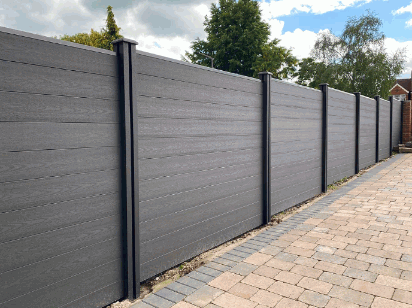
What Are The Maintenance Requirements For Composite Fencing?
Maintaining composite fencing is relatively straightforward compared to traditional wooden fences, but certain requirements should be followed to ensure its longevity and avoid warranty invalidation.
Regular cleaning is essential to remove dirt, mud, and other debris that can accumulate over time, making it important to use appropriate cleaning solutions that won’t damage the composite boards.
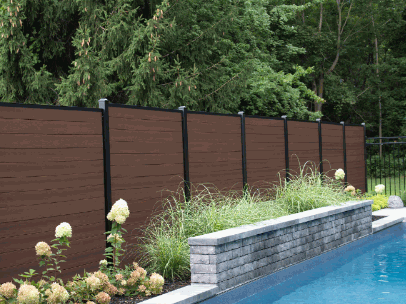
How Often Should You Clean Composite Fencing?
Cleaning composite fencing should be conducted at least once a year, although more frequent cleanings may be necessary depending on your local weather conditions and the amount of exposure to dirt and mud in your outdoor space. Regular cleaning not only helps maintain the aesthetic appeal of the composite boards but also prevents the buildup of substances that could contribute to long-term damage.
The frequency of cleaning will largely depend on various factors, including:
- Local Climate: Areas with heavy rainfall or snowfall may require more frequent cleaning to address mould, mildew, and other moisture-related issues.
- Environmental Conditions: If your fencing is exposed to high levels of dust, pollen, or pollution, it might collect debris more rapidly.
- Proximity to Vegetation: Fencing near trees may cause sap and leaf accumulation, necessitating immediate attention.
To effectively clean composite fencing, it is recommended to use:
- Warm, soapy water with a soft bristle brush for general cleaning.
- A pressure washer on a low setting for stubborn dirt or stains.
- Specialised composite cleaners are free from harsh chemicals to avoid any potential damage.
By considering these factors and utilising appropriate cleaning methods, one can significantly extend the lifespan and appeal of their composite fencing.

Do You Need To Seal Composite Fencing?
While sealing composite fencing is not always necessary, applying a high-quality stain or sealant can enhance its appearance and provide additional protection against weather elements. Sealing can help prolong the life of the composite boards and ensure that warranty conditions are met, making it a wise maintenance alternative for homeowners looking to keep their fencing in optimal condition.
When considering sealing, it’s essential to weigh the pros and cons. On one hand, applying a sealant can significantly improve aesthetic appeal by enriching colours and providing a uniform finish. The right sealant can guard against moisture, UV rays, and mould, thereby extending the lifespan of your investment.
On the downside, sealing requires an investment of time and money, including the cost of materials, and might necessitate replications every few years depending on product quality and environmental factors.
Most importantly, sealing can affect warranty claims. Many manufacturers specify that using certain products is necessary to maintain warranties, so it’s crucial to read the fine print carefully.
- Types of sealants available include:
- Water-based stains for easy application and clean-up.
- Oil-based sealants for deeper penetration and longer-lasting protection.
- Spray-on products for quick touch-ups.
Ultimately, choosing whether to seal composite fencing will depend on a variety of factors, including climate, exposure to elements, and personal maintenance preferences.
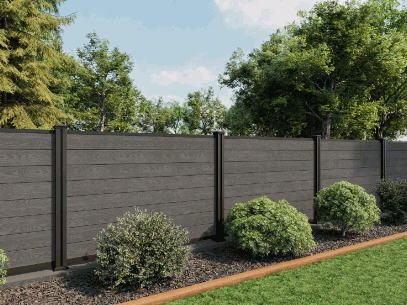
Can You Repair Scratches Or Damage On Composite Fencing?
Yes, you can repair scratches or damage on composite fencing, allowing homeowners to restore the fence’s original appearance without the need for complete replacement.
Depending on the severity of the damage, minor scratching marks can often be buffed out, while deeper structural damage may require the replacement of specific composite boards, making it a viable maintenance alternative to keep your fencing looking its best.
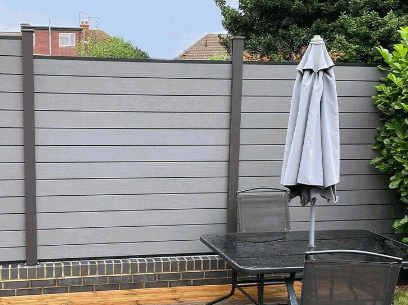
What Are The Steps To Repairing Scratches On Composite Fencing?
Repairing scratches on composite fencing involves a straightforward process that begins with a thorough cleaning of the affected area to remove any dirt or debris that may interfere with the repair.
After completing this critical first step, it is essential to carefully assess the extent of the damage, as not all scratches require the same approach or products. Typically, this assessment helps determine whether a simple buffing will suffice or if you will need to employ a filler intended for use with composite materials.
- Gather necessary tools such as a soft cloth, sandpaper (fine grit), and a filling knife.
- Acquiring a composite repair kit that includes a filler and colour-matching paint can significantly aid the process.
- Once you have the right supplies, follow the manufacturer’s instructions for best results, ensuring that your fencing maintains its aesthetic and functional integrity.
By taking the time to carefully follow these steps, your composite fencing can look as good as new, preserving both its appearance and longevity.
How Can You Prevent Damage To Composite Fencing?
Preventing damage to composite fencing is crucial for maintaining its durability and appearance, and there are several proactive steps homeowners can take. Regular inspections of the fence can identify potential issues early, whilst ensuring that landscaping and outdoor furniture are positioned to avoid contact with the composite boards helps to minimise scratching marks and other wear caused by weather elements.
Plus these measures, it is important to incorporate a routine maintenance schedule that includes checking for loose boards, tightening hardware, and cleaning the surface to avoid buildup of dirt and grime. Homeowners should also consider implementing landscaping tips, such as:
- Avoiding planting vegetation too close to the fence, which can retain moisture and lead to rot.
- Utilising mulch or rock borders to divert water runoff away from the fence line.
- Choosing drought-resistant plants that require less watering and thus, less potential for water damage.
Employing protective coatings not only enhances the aesthetic appeal but also acts as a barrier against harsh UV rays and moisture. Regularly reapplying these coatings ensures that the integrity of the composite material is retained and can significantly prolong the lifespan of the fencing.
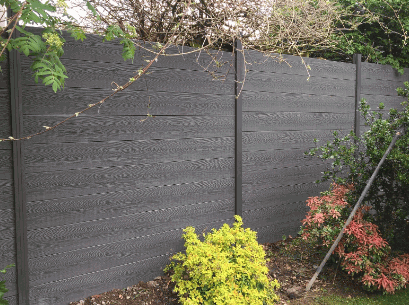
What Are Some Tips For Maintaining The Colour Of Composite Fencing?
Maintaining the colour of composite fencing is essential for preserving its aesthetic appeal and involves a few straightforward tips.
First, ensure regular cleaning to remove dirt and debris that can cause discolouration over time, while using high-quality stains specifically designed for composite materials can add a protective layer against UV damage and help retain the vibrant colour of your fencing.
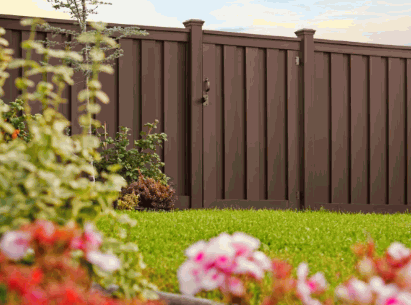
Can You Use A Pressure Washer On Composite Fencing?
Using a pressure washer on composite fencing can be an effective cleaning method, but it is essential to do so cautiously to avoid causing damage. When using a pressure washer, set the pressure to a medium level and keep the nozzle at a safe distance from the composite boards to prevent scratching marks or structural damage that could compromise the integrity of the fence.
To achieve the best results without compromising the material, it is advisable to maintain a distance of at least 30 to 46 centimetres from the surface while working. This distance not only helps in avoiding damage to the fence but also ensures an even cleaning effect. It is also wise to use a wide-angle nozzle to disperse the water more broadly, reducing the pressure on any one spot.
Before using the pressure washer, make sure to clear the area of any debris or objects that may obstruct the cleaning process. Consider employing alternative cleaning methods, such as:
- Use a gentle soap solution with a soft brush for delicate spots.
- Applying a diluted vinegar solution for mildew and mould.
- Use a garden hose with a spray nozzle for regular maintenance.
All of these practices can help keep the composite fencing looking pristine without the risks associated with high-pressure washing.
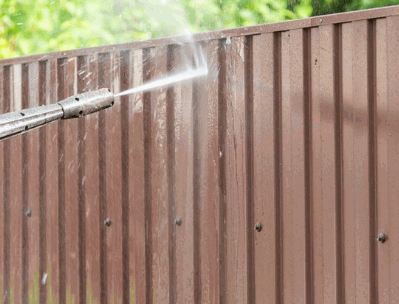
What Are Some Common Mistakes To Avoid When Maintaining Composite Fencing?
When maintaining composite fencing, avoiding common mistakes is crucial for ensuring its longevity and appearance. One common error is using harsh chemicals during the cleaning process, which can damage the composite boards and potentially lead to warranty invalidation. Neglecting regular inspections may result in minor issues becoming major problems.
To enhance the lifespan of composite fencing, it is essential to follow a few simple yet effective guidelines. Start by opting for mild soap solutions and warm water when cleaning the surface, as this will protect its integrity while still promoting cleanliness.
Regular inspections should focus on areas susceptible to moisture accumulation and deterioration. Creating a routine inspection schedule can save time and resources in the long run. Be wary of pressure washing, as excessive force can strip away protective layers.
- Always use a gentle cleaning approach.
- Inspect joints and connectors regularly.
- Avoid heavy-duty chemicals.
- Establish a maintenance log to track inspections and cleanings.
By adhering to these guidelines, one can maintain the aesthetic appeal and structural soundness of their fencing investment.
